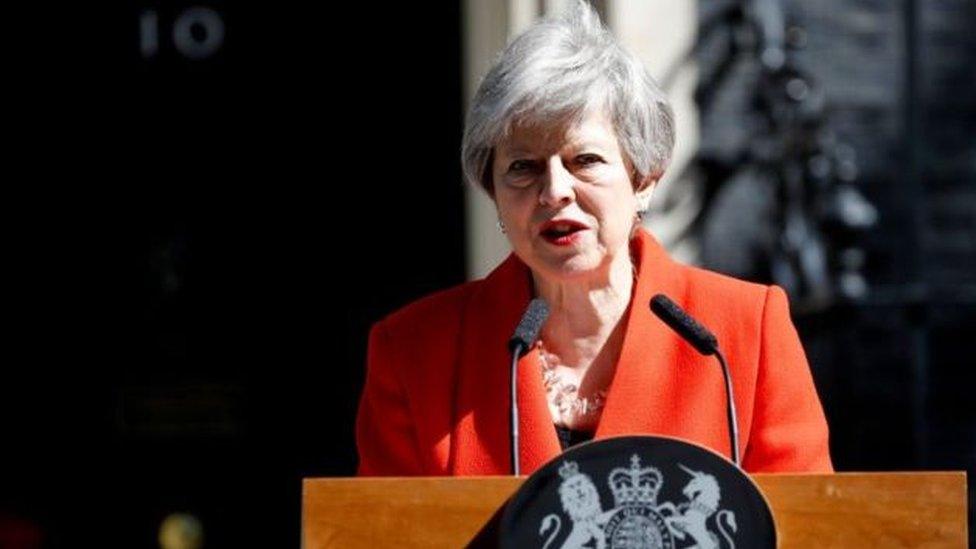Brush with May signposted Brexit maze
- Published

Theresa May has announced she will resign on 7 June
In June 2016, I was despatched to a hairbrush factory in Bangor, County Down, to interview a VIP who had just flown across from London to back the Remain campaign.
It turned out to be the then Home Secretary, Theresa May.
She had been accused by some fellow Remainers of keeping her head down during the campaign to the point of being invisible.
So you might have thought her decision to break cover would have been big news.
However, that period had seen a raft of ministers travelling across for pro-Remain photo ops (George Osborne had just been and gone).
In the event, the interview only made a clip on our lunchtime news, running after a curious story about a glossy DUP funded pro-Leave wraparound advert published in an English newspaper.
In retrospect, though, the terrain of our brief interview in the factory reception proved all too crucial to Mrs May's three-year stint in Number Ten.
She referenced the potential problems with tariffs and cross border trade, continuing "if you pulled out of the EU and came out of free movement, how could you have the situation where there was an open border with a country that is in the EU and had access to free movement?"
At that point, the questions were still hypothetical, but once the UK voted for Brexit and Theresa May took over from David Cameron, trying and failing to find politically acceptable answers to the conundrum dominated Mrs May's premiership.
Aware of the difficulty of the task, the prime minister tried to shore up her position by calling a snap election.
'Rabbits in the headlights'
But that gambit backfired, leaving Mrs May beholden to the DUP, the very party most likely to regard any compromise over Northern Ireland with profound scepticism.
The confidence and supply arrangement sustained her in office at the cost of £1bn in spending commitments.
However, that relationship hobbled her government's scope for radical action on Brexit, and left her secretaries of state looking like rabbits caught in the headlights whenever faced by any decision regarding the Stormont deadlock.

Mark Devenport met Theresa May at a hairbrush factory in 2016
The prime minister's personal inability to persuade and cajole her critics hasn't helped her navigate a way out from the Brexit maze.
But even if she had all the persuasive powers of a Blair or Clinton in their prime, would she have been able to defy the Westminster numbers game after the 2017 election results came in?
Back in 2016 at the hairbrush factory in Bangor, Mrs May correctly diagnosed one of the major obstacles to delivering a clean-break Brexit.
As she prepares to leave office, it's yet to become clear if there is such a thing as a workable solution acceptable in Brussels, Dublin, Belfast and Westminster.
